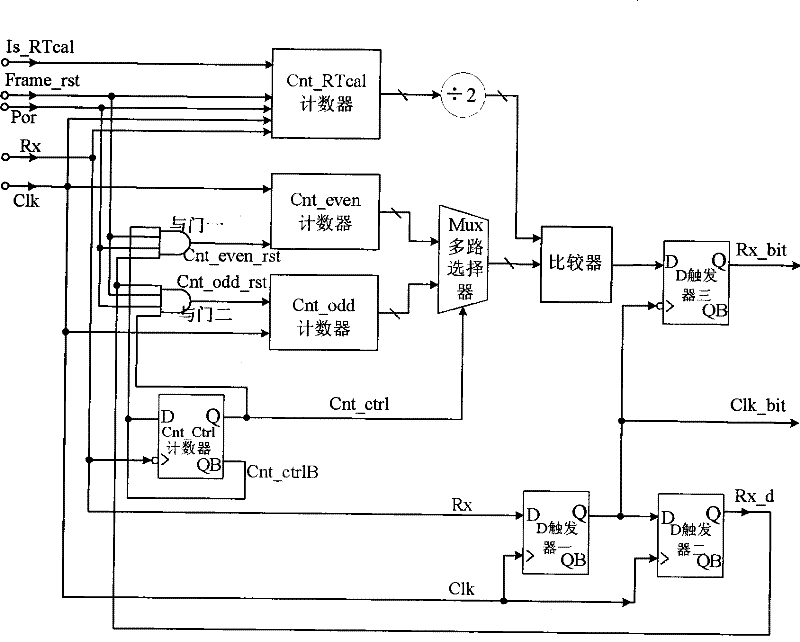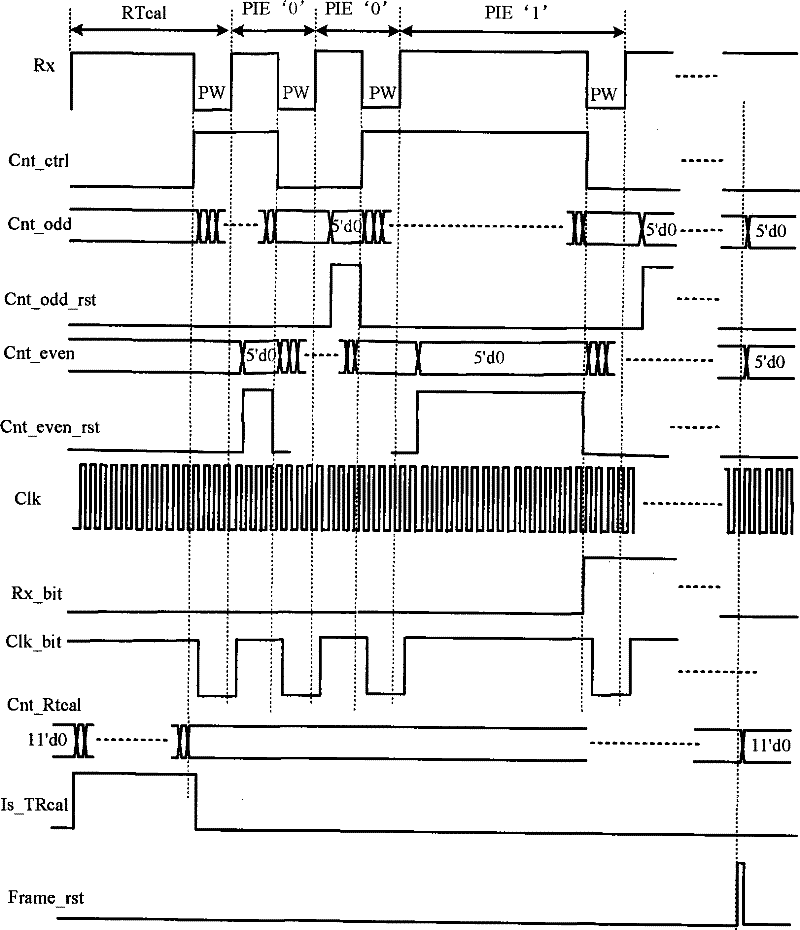Decoder suitable for PIE coding
A decoder and encoding technology, applied in the field of radio frequency identification, can solve problems such as synchronization loss, and achieve the effect of avoiding synchronization loss, saving area and logic complexity, and reducing power consumption
- Summary
- Abstract
- Description
- Claims
- Application Information
AI Technical Summary
Problems solved by technology
Method used
Image
Examples
Embodiment Construction
[0030] see figure 1, The decoder of the present invention includes a Cnt_RTcal counter, a Cnt_even counter, a Cnt_odd counter, a Cnt_ctrl counter, a Mux multiplexer, a comparator, and three D flip-flops. The count enable signal Is_RTcal is connected to the input of the Cnt_RTcal counter. Both the frame end signal Frame_rst and the reset signal Por are connected to the Cnt_RTcal counter and the input ends of AND gate 1 and AND gate 2 respectively. The PIE encoded data input Rx is respectively connected to the input end of the Cnt_RTcal counter, the clock input end of the Cnt_ctrl counter and the data input end D of D flip-flop two. The clock Clk is respectively connected to the input terminals of the Cnt_RTcal counter, the Cnt_even counter and the Cnt_odd counter and the clock input terminals of the D flip-flop two and the D flip-flop one. Half of the output value of the Cnt_RTcal counter is connected to one input of the comparator. The output terminal Q of the Cnt_ctrl coun...
PUM
 Login to View More
Login to View More Abstract
Description
Claims
Application Information
 Login to View More
Login to View More - R&D
- Intellectual Property
- Life Sciences
- Materials
- Tech Scout
- Unparalleled Data Quality
- Higher Quality Content
- 60% Fewer Hallucinations
Browse by: Latest US Patents, China's latest patents, Technical Efficacy Thesaurus, Application Domain, Technology Topic, Popular Technical Reports.
© 2025 PatSnap. All rights reserved.Legal|Privacy policy|Modern Slavery Act Transparency Statement|Sitemap|About US| Contact US: help@patsnap.com



